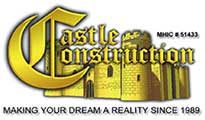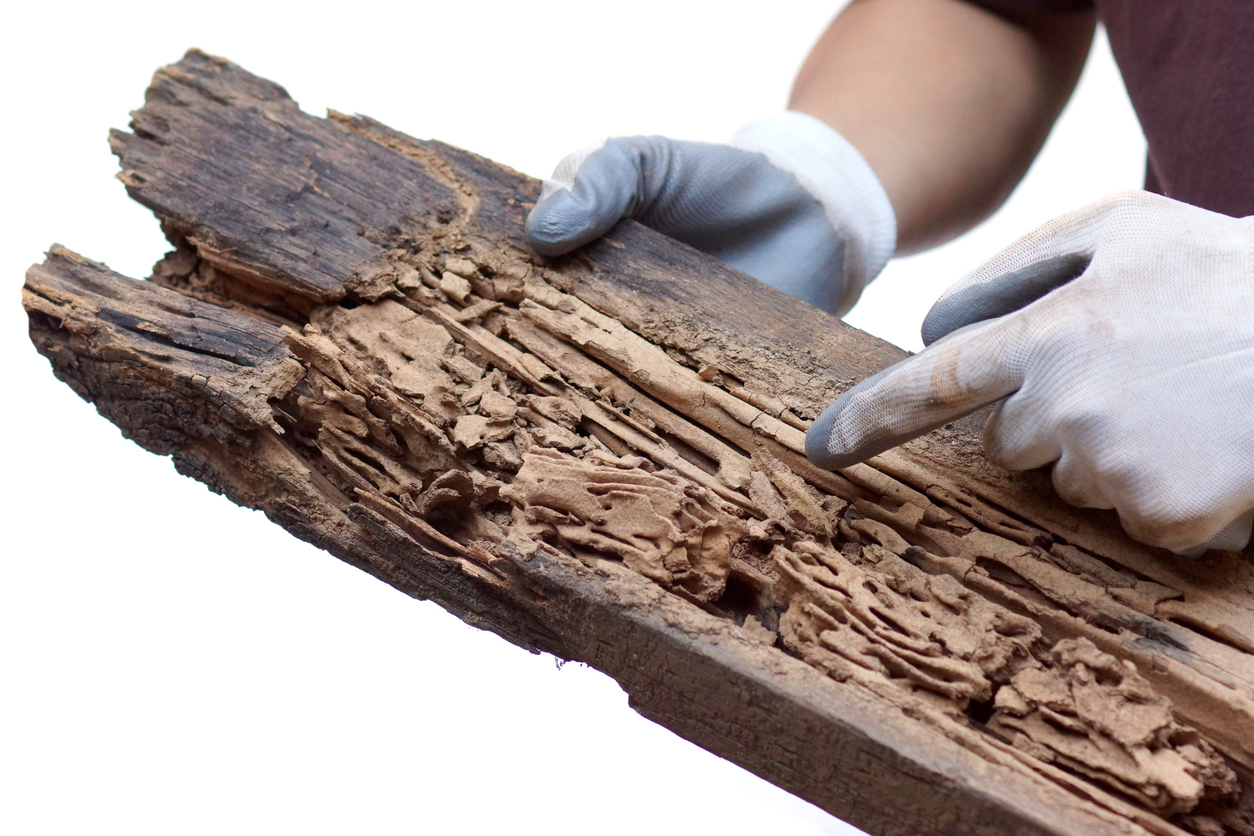Homeowners’ insurance typically does not cover termite damage. Termite infestation is seen as a maintenance issue. The nuances of homeowners insurance can save you from unexpected expenses in the long run. Standard homeowners insurance policies often exclude damage from termites and other pests, considering it preventable through regular maintenance rather than sudden or accidental.
How can I find termites in my home?
To the untrained eye, termites can be challenging to detect. However, once you become familiar with certain indicators, spotting them becomes more manageable.
Termite tunnels: Search for termite tunnels near your home’s foundation and areas with exposed wood. These tunnels are small tubes resembling mud, possibly forming a vine-like pattern on walls, floors, or even outdoors.
Wood damage: Check for damage that resembles a carved maze on the wood. Various termite species cause distinct patterns of wood damage, so not all destruction will follow this specific pattern. To detect hidden termite activity, tap on wood surfaces with a screwdriver and listen for a hollow sound.
Irregular flooring: Warped or sagging floors may suggest termite presence. What appears to be water damage could be caused by these pests.
The pests themselves: Termites bear a resemblance to flying ants but are pale yellow with straight antennae (as opposed to ants with hooked antennae). Termites possess two pairs of identical wings, and you may find discarded wings in areas where they have been present.
If you have any doubts about a potential termite infestation, it is advisable to contact a professional pest control company for a comprehensive inspection.
Homeowners Insurance Basics
Homeowners insurance is key to knowing what is covered. This type of insurance guards your home against unexpected events. Think of it like a safety net for your house. Disasters like fires, storms, and theft often get covered. But, not all bad things that happen to your home will have insurance protection. It’s important to read the insurance policy carefully. Most of the time, standard policies don’t include termite damage. Termites eat wood, which can harm your home’s structure. Their silent destruction isn’t sudden or accidental, so insurance might not help. Regular maintenance is vital to prevent these little critters from causing big problems.
Termite Damage Reality Check
Termites can wreak significant havoc on a home’s structural integrity. Often, the damage is severe as termites continuously consume wood, which can lead to expensive repairs. Homeowners should be vigilant, as insurance policies rarely cover termite damage. It’s deemed preventable with regular maintenance. Recognizing termites early is critical. Look for telltale signs like wood damage, mud tubes, and discarded wings. Other indicators include hollow-sounding wood and frass, which are termite droppings. These symptoms suggest an urgent need for pest control to prevent further damage. Prompt action may save homeowners from hefty repair bills that insurance won’t cover.
Policy Language
Homeowners insurance often includes language about ‘sudden and accidental’ events. This language is key when understanding coverage. Terms like these can influence insurance payouts for damages. In most cases, termite damage is not seen as ‘sudden’ or ‘accidental’. Instead, it’s viewed as preventable with regular maintenance. Some policies might offer a special provision for such damage. Yet, these are not common and come with limitations. Homeowners should read their policies closely. Look for any special terms about pests or insects. Many providers consider termite destruction as routine wear and tear. Therefore, it falls outside of typical homeowners insurance coverage.
Myths Vs. Facts
Many people think homeowners insurance covers termite damage, but this is often not the case. Insurance typically views termites as preventable pests. Maintenance to prevent them is the homeowner’s responsibility. Policies usually don’t cover termite damage or removal. It’s important to read your policy closely. Some insurers may offer additional coverage for pests. It’s not standard in basic homeowners policies.
Care for your home properly to avoid these unwanted guests. Regular inspections can help prevent serious damage. Contact your insurance provider to understand your specific coverage. This ensures you’re not caught off guard by unexpected costs. Remember, termite prevention is cheaper than repair.
Preventive Measures
Regular termite inspections are key to preventing costly damage. A professional can spot signs of termites early. They can also offer tailored advice to keep your home safe. Maintaining your property regularly helps too. Fix leaks, seal cracks, and ensure wood doesn’t touch soil. This keeps termites away.
Use specific materials and chemicals to protect your home. Borate treatments on wood repel termites. Use termite-resistant materials when building or renovating. Keep plants and mulch away from your home’s foundation. This reduces the risk of infestation.
| Action | Purpose |
| Inspect annually | Spot early signs of termites |
| Maintenance | Fix leaks, seal entry points |
| Material choice | Use termite-resistant options |
Remember, proactive steps today can save on repair costs tomorrow.
Navigating Denials
Termite damage is often not covered by homeowners insurance. This leaves many homeowners facing unexpected repair costs. Understanding your policy’s specifics is key to knowing your coverage limits. Documenting all damages and repair estimates is essential when filing a claim.
Here are steps to contest a denial from your insurer:
- Review your insurance policy to confirm the denial is valid.
- Gather evidence of termite damage and costs for repairs.
- Contact your insurance agent to discuss the denial.
- Request a written explanation for the insurer’s decision.
- If unresolved, seek a second opinion or an independent appraisal.
- Consider enlisting a public adjuster if the claim is large.
- If necessary, contact your state’s insurance department.
- Explore legal advice as a last resort.
Alternatives And Additional Protections
Standard homeowners insurance often excludes termite damage. It’s vital to consider specialized termite warranties. Companies offer these as a safety net against infestations. These warranties cover inspections and might include repairs. It’s a defense plan for your property. Looking for broader coverage? Riders and supplemental policies extend your insurance. They function as an addition to your existing policy. The extra cost brings peace of mind. Coverage spans repair costs that regular insurance might not handle. Always check with your insurance provider for options.
FAQs Of Does Homeowners Insurance Cover Termite Damage
Why Doesn’t Insurance Cover Termites?
Insurance typically doesn’t cover termites because they’re considered a preventable maintenance issue. Regular home inspections and proper upkeep can usually thwart infestations.
Can A House Be Saved From Termite Damage?
Yes, it is possible to save a house from termite damage with prompt professional intervention and proper structural repairs. Regular inspections and preventative treatments are also crucial for protection.
What Should You Do If You See Termites In Your House?
Immediately contact a professional pest control service. Avoid disturbing the termites or their nests. Seal entry points and remove food sources. Schedule a home inspection to assess damage. Prevent future infestations with regular maintenance and monitoring.
Does Homeowners Insurance Cover Rotting Wood?
Homeowner’s insurance typically does not cover rotting wood. This damage is often due to neglect or wear and tear, which policies usually exclude.
Is Termite Damage Covered By Homeowners Insurance?
Typically, homeowners insurance does not cover termite damage. Standard policies often exclude damage from pests, considering it a maintenance issue.

